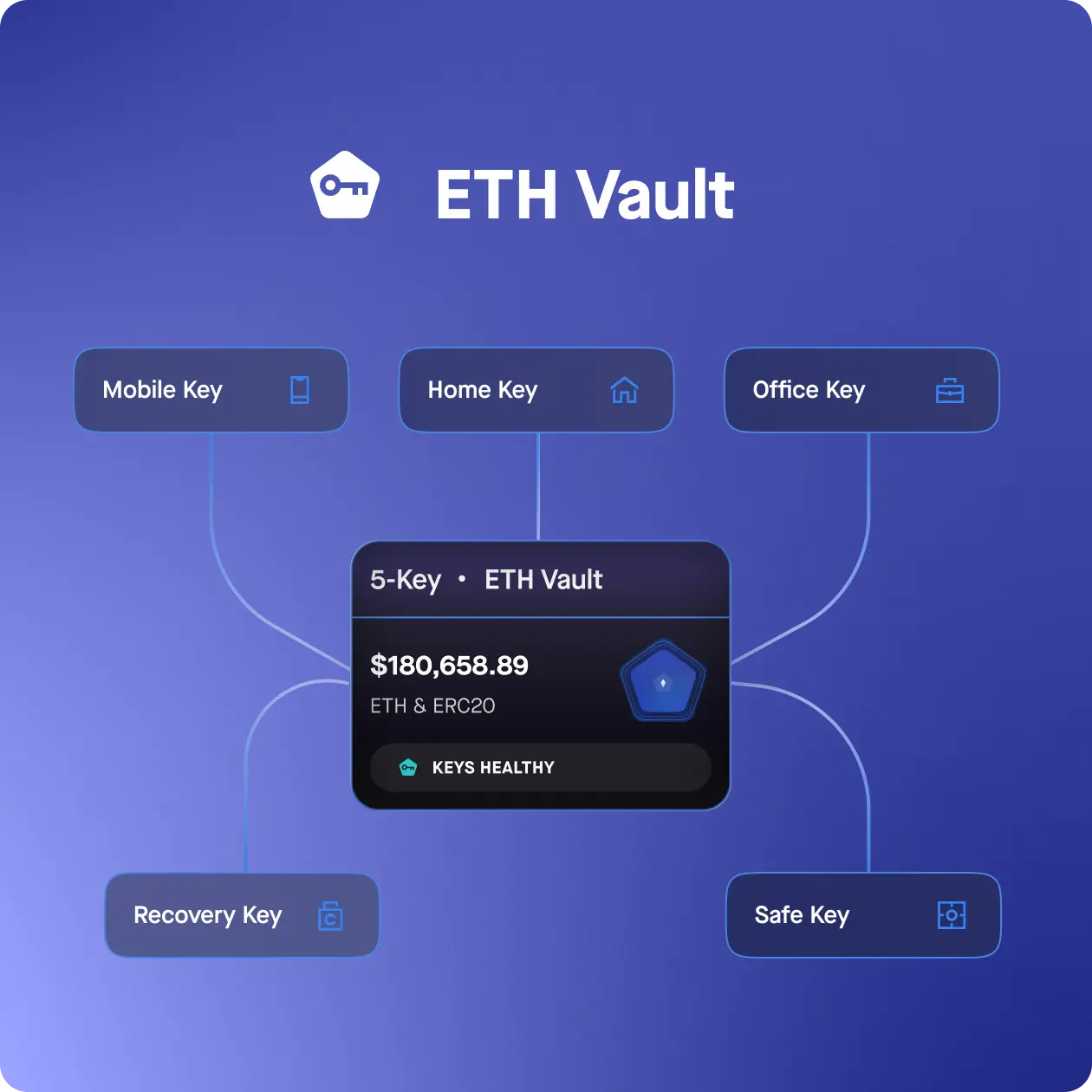Let's chat.
Looking to talk to a Casa expert? We're here to help.
Looking to talk to a Casa expert? We're here to help.
Ethereum is the gateway to web3 for many investors, and it’s important to begin that journey from a secure foundation of self-custody. Ethereum wallets, including our Casa vault, allow you to do just that.
There are some basic points you should know before you choose an ETH self-custody option. Here’s an overview of ethereum wallets and how they can help you keep your ETH safe.
Ethereum wallets are applications and devices for secure, managing, and interacting with your ether (ETH) and ETH-related assets.
At a technical level, ethereum wallets assist with storing the private key(s) to your assets, and they help you generate signatures for your ETH transactions.
Ethereum wallets come in many forms, each with its own features and security tradeoffs:


Real-time support

Simple interface

Professional-grade security
With an ETH wallet, you can take self-custody of your ETH by holding your own keys. That way, you have true ownership over your assets and can transact directly on the ethereum blockchain.

If you don’t hold your keys, someone else does, such as an exchange or a custodian like Coinbase. Until you withdraw your ETH to a set of keys you control, the ETH is not really yours for all intents and purposes. Holding your own keys allows you to send ETH directly on the ethereum network without relying on a third party, which is what owning digital assets is all about.
Selecting the best ETH wallet depends on several key factors:
The best practice is to secure your ETH as if it were worth 10x the value it is today. That way, your setup is secure for whatever lies ahead.
If you plan to use your ETH for frequent web3 interactions, a mobile wallet or hardware wallet may work well.
Your long-term stash should be more secure. A wallet with multiple keys is much harder for hackers and thieves to access.
For instance, if you consider yourself an active trader, it can make sense to have the assets you’re trading available to you on a hot wallet for convenience. At the same time, your long-term holdings are best secured in cold storage away from the internet. Casa is able to do both all within the same secure app.

There are a variety of ETH wallets on the open market each with its own security features trade-offs. These include mobile wallets, browser extensions, hardware wallets, desktop wallets.
Casa vaults use a multi-key design built around self-custody and cold storage. Each vault is built using multiple devices including one or more hardware wallets, a mobile app for easy access, and the Casa Recovery Key for emergency assistance. This setup incorporates many of the features of other wallets with robust protection against single points of failure.
Learn more about why Casa is different here.

When it comes to securing ETH, there are several standard security practices you should adhere to if you wish to protect your investment from loss or theft. Here are the key considerations for selecting an ETH wallet.
Self-custody: Until you possess the keys to an ETH account, you don’t really own the underlying assets. Holding your keys yourself ensures that you will remain the true owner of your investment regardless of whatever happens to exchanges and custodians.
Cold storage: If your keys are on an internet-connected device, they are not secure. Cold storage is the practice of holding your keys offline until you are ready to send assets elsewhere. Hardware wallets and Casa vaults allow you to keep your keys in cold storage when you’re not trading, minting, interacting with the ETH blockchain, etc.
Multiple keys (multisig): Security should scale with your level of investment. When your ETH investment represents a sizable amount of your net worth, it’s best to upgrade your protection from a single-key wallet to a multi-key solution like the Casa vault. This ensures your ETH is not susceptible to complete devastation from a single incident. This option requires multiple authorizations from different devices in separate locations before assets can be sent from your cold storage.
Personal onboarding: You don’t have to be tech-savvy to take self-custody of your ETH. Our advisors can guide you through creating your multi-key vault, or you can simply follow a tutorial in our Casa app on your own.
Emergency support: We’ve all seen the news headlines of web3 hacks, burglaries, and custodial collapses. It’s vitally important to have an emergency plan because you never know when disaster may strike. For instance, Casa allows you to lock down your account in case of emergency, so you can react swiftly and securely.

Most ETH wallets have only one key (or seed phrase). If that key is lost or compromised, your assets are gone.
Casa’s ETH vaults use multiple keys and a smart contract. With our advanced 5-key vault, you can replace up to two compromised keys for protection against any number of catastrophic events.
With Casa, you can safely take self-custody, the best way to secure crypto from third-party risk. Set up a multi-key vault and never worry about your ETH again.